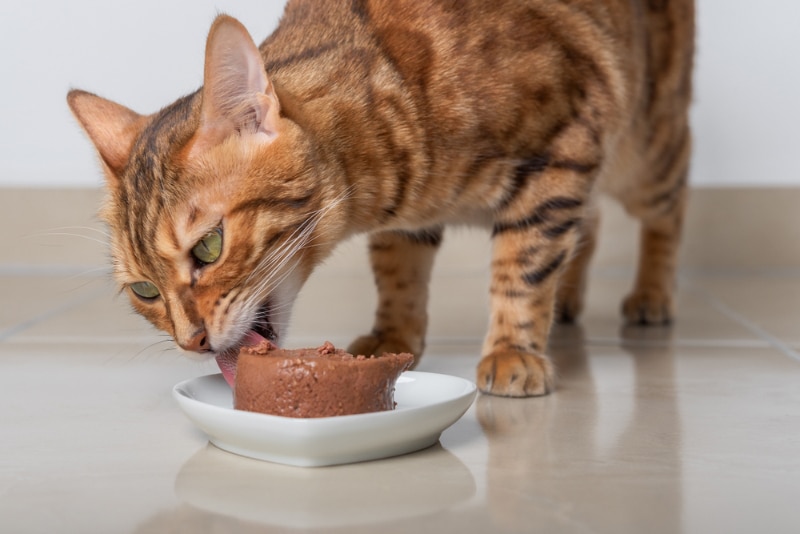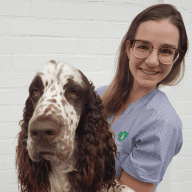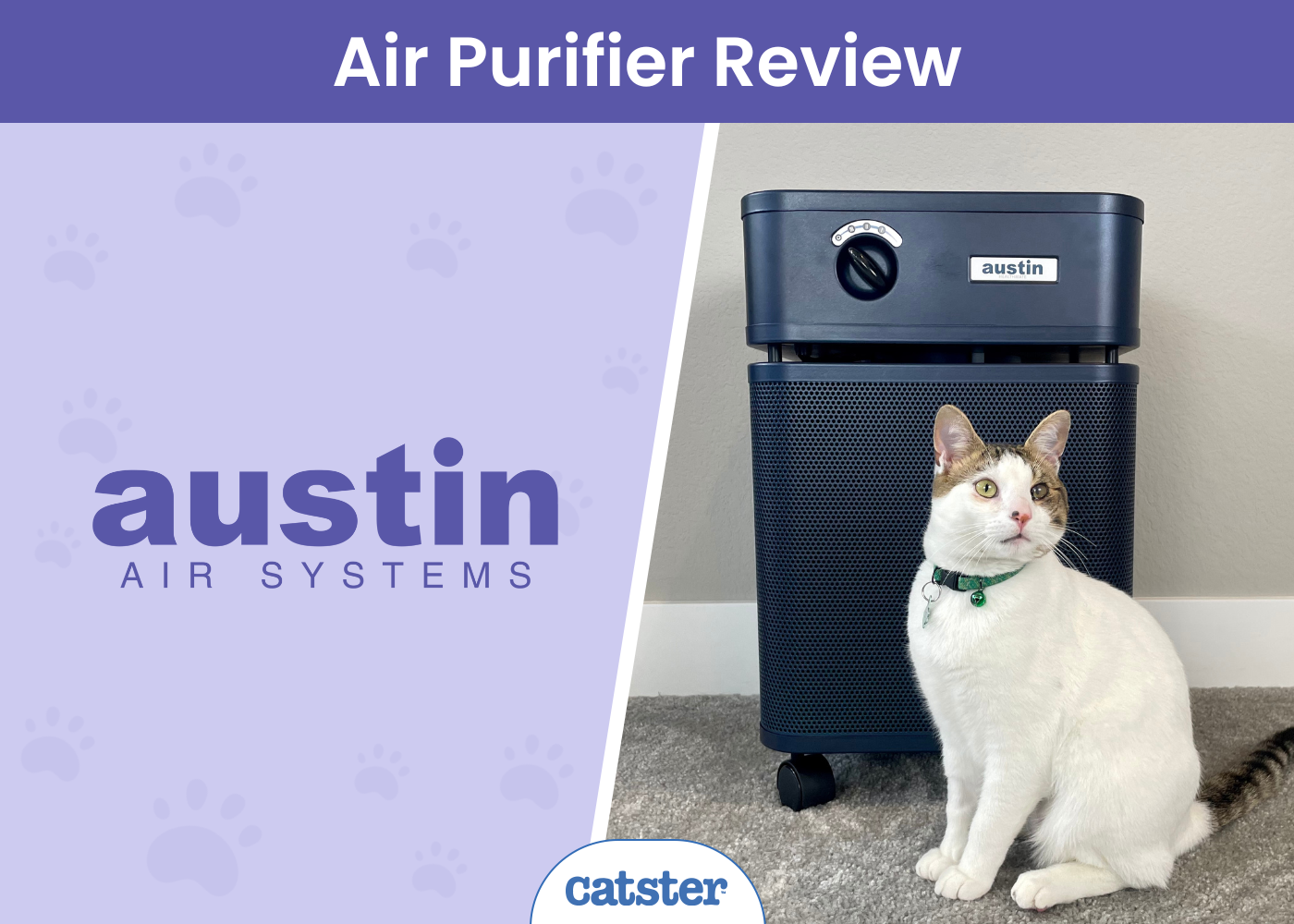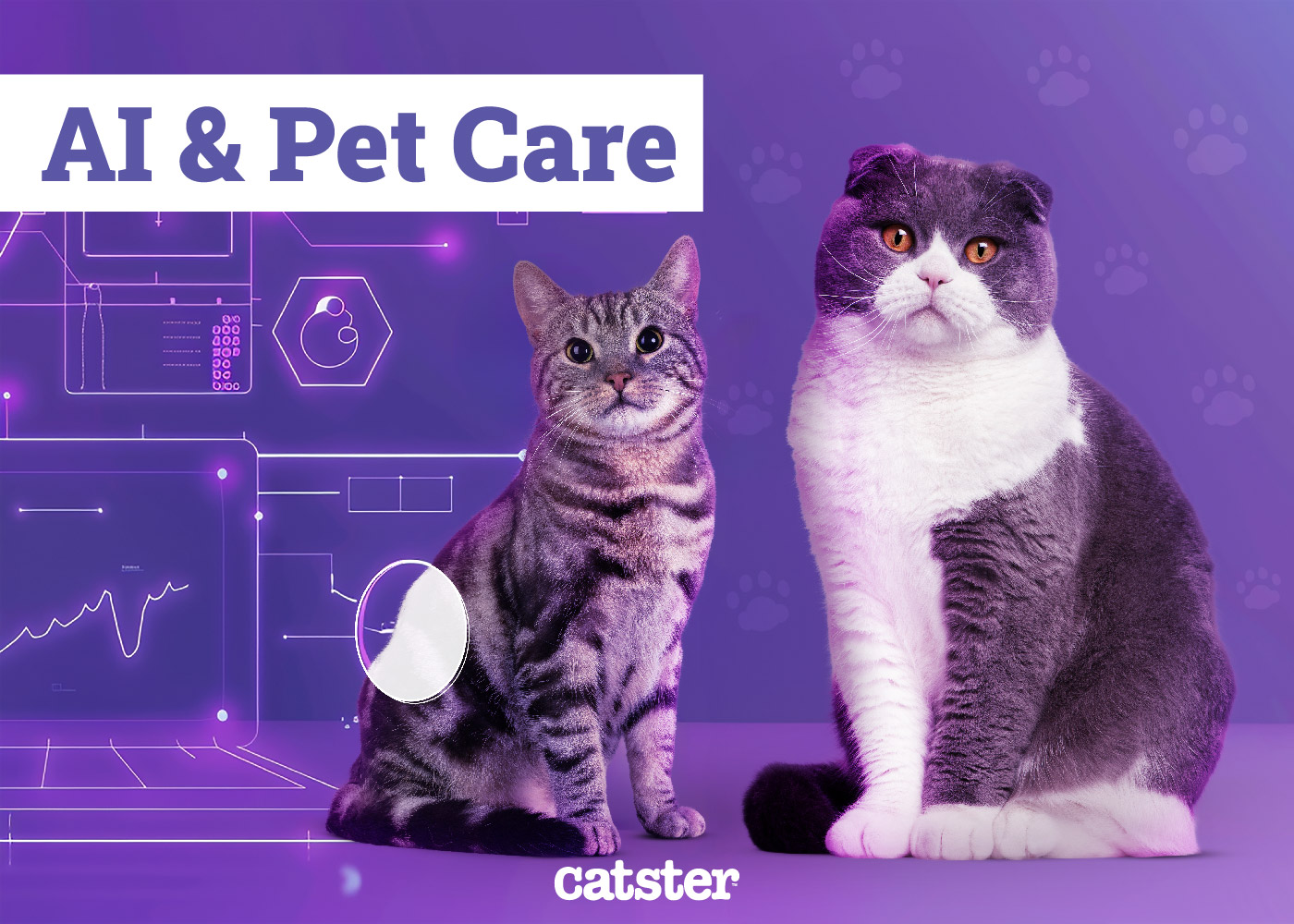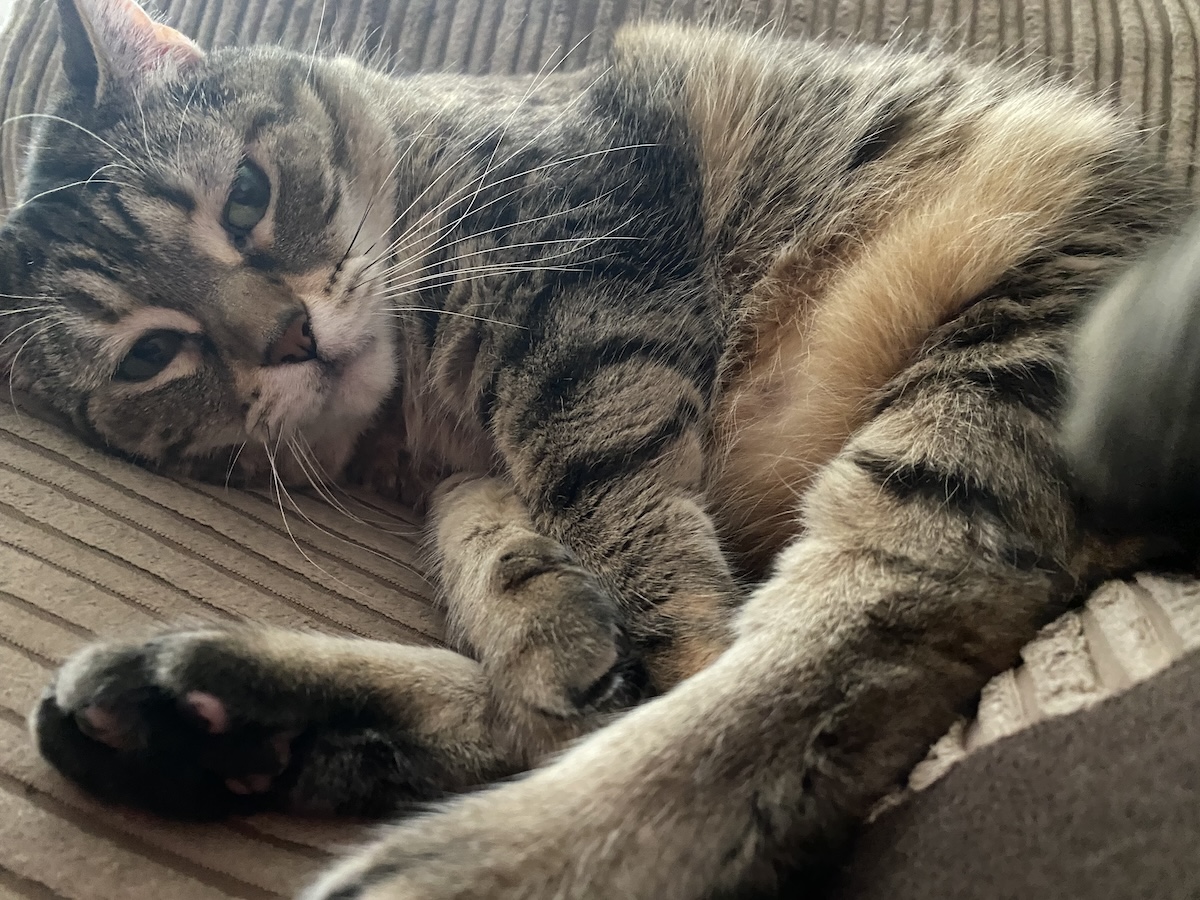Click to Skip Ahead
If you’re a cat owner who likes to read pet food labels, you’ll probably come across some ingredients you don’t recognize. Since you don’t want to feed your cat anything toxic or unsafe, your next step is to research unfamiliar products.
Unfortunately, finding credible information sources regarding pet food ingredients can be tough because everyone seems to have an opinion. Carrageenan is a common component of wet cat food and many human food items. This ingredient is not without controversy, however. In this article, you’ll learn what carrageenan is, how it’s used, and our opinion as to whether carrageenan is bad for cats.
How Does It Work?
Carrageenan is a food additive extracted from red seaweed. It serves multiple purposes in pet and human food, including as a thickener, binding agent, preservative, and stabilizer. Essentially, it helps hold wet pet food together, adds bulk, and serves as a source of soluble fiber.
Carrageenan and similar gum products also help the body produce short-chain fatty acids, which help fuel the intestines and aid water and electrolyte absorption.
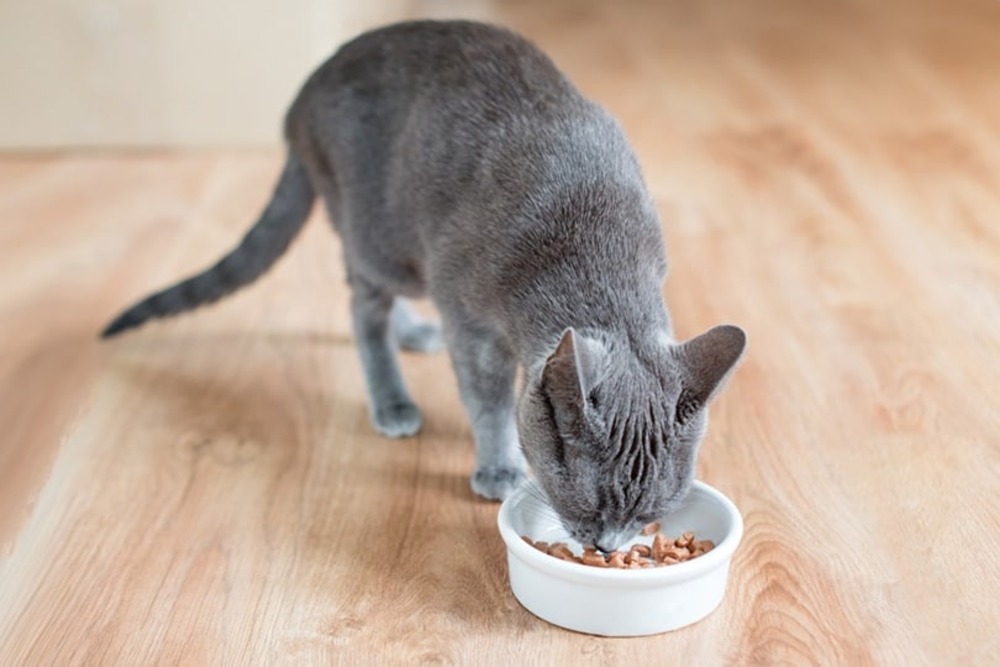
What Are the Different Types of Carrageenan?
Carrageenan is available in “food-grade” or undegraded form. It is also found in a semi-refined form primarily for use in pet food. The difference between the types of carrageenan lies in how they’re manufactured.
These types of carrageenan are approved for use as food additives in the United States1 and Europe2. Another type of carrageenan, degraded, is not approved for use in food. It’s known to cause inflammation and is classified as a carcinogen.
Where Is It Used?
In human food, carrageenan is common in dairy products like yogurt, cottage cheese, and ice cream. Because it serves a similar function to gelatin made from animal products, carrageenan is often found in vegan and vegetarian non-dairy milk. Deli meats and similar items also contain carrageenan.
In cat food, carrageenan is found almost exclusively in canned or wet diets. Dry kibble generally doesn’t contain this ingredient.
Advantages of Carrageenan
Carrageenan is an inexpensive way to give canned cat food bulk and hold it together. As we mentioned, it also contributes to the fiber content of the food.
This fiber plays a role in intestinal health and helps fuel digestive functions. In human food, carrageenan is a plant-based alternative to gelatin that is useful in vegan and vegetarian food production.
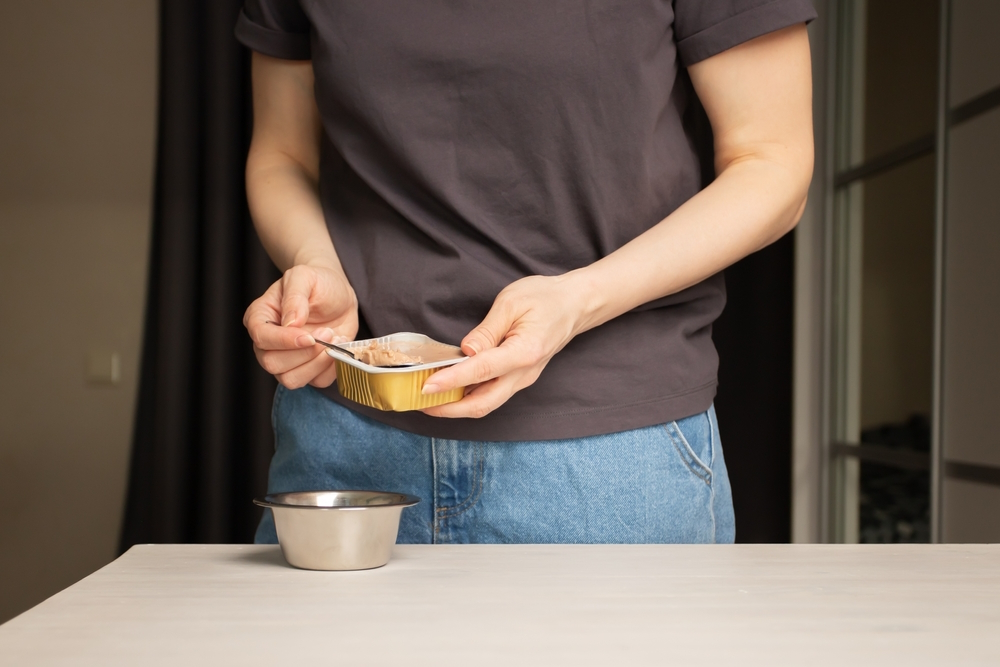
Disadvantages of Carrageenan
Degraded carrageenan is linked to such issues as increased inflammation, inflammatory bowel disease, bloating, allergies, and colon cancer. While this product is not supposed to be present in either pet or human food, some reports suggest that human-grade carrageenan still contains a small percentage of degraded products.
In addition, there is concern that the safe carrageenan may degrade into a more inflammatory product during digestion.
Frequently Asked Questions (FAQ)
Is Carrageenan Safe for Cats?
Answering this question is tricky simply because there’s not a lot of hard data to support any conclusions. The few studies we do have regarding undegraded carrageenan in cat food tentatively concluded that it is safe at certain levels. Because of that, it is still approved for use as a food additive in the U.S. and Europe.
Cats can’t tell us if they feel bloated or uncomfortable when eating food with carrageenan like humans do. Some of the information we have about carrageenan comes from people reporting their symptoms and feeling better once they eliminate it from their diet.
Degraded carrageenan is linked to inflammation and gut issues, and it’s definitely not safe for cats. The possibility of degraded carrageenan being present in cat food may be enough for some pet owners to avoid the ingredient.
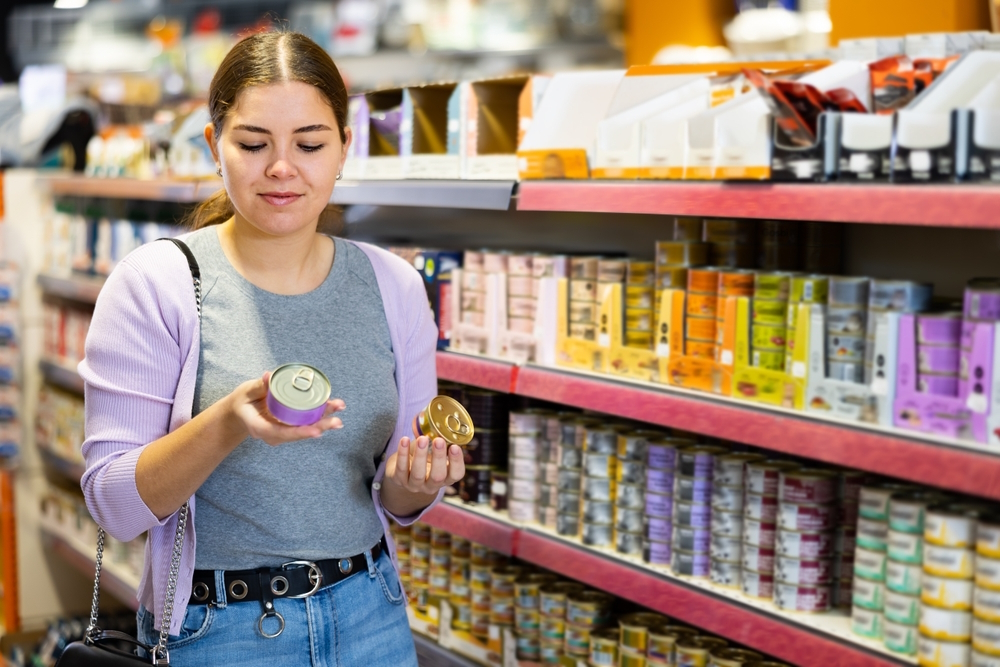
Should Cats with Certain Health Conditions Avoid Carrageenan?
Always ask your veterinarian about any dietary ingredients that you are concerned about, especially if your cat has a chronic health condition.
Can I Buy Cat Food Without Carrageenan?
If you want to avoid carrageenan, you can feed your kitty dry food, which rarely contains this product. You can also find wet foods that don’t contain carrageenan.
You can talk to your veterinarian to make sure the food you choose still provides all the essential nutrients your cat needs.
Conclusion
Because pet food is a highly lucrative industry, manufacturers are constantly looking for new ways to attract consumers to their products. One way to do that is to advertise that their food is free from whatever ingredients are currently controversial or out of favor with pet owners.
Carrageenan is one of those ingredients. While one variation may cause inflammation and is linked to cancer, it’s technically not allowed in cat food. In the absence of unbiased data, the use of carrageenan in cat food is unlikely to change. However, if you choose to avoid carrageenan, you can buy brands without it.
Featured Image Credit: Amerigo_images, Shutterstock

